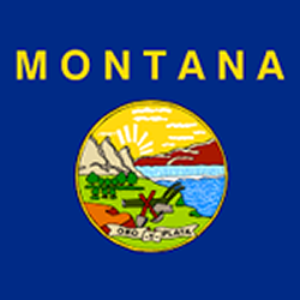Together with the Department of Commerce, Governor Greg Gianforte announced the state has awarded $605,000 to Montana businesses and nonprofits for skills-based workforce training and apprenticeship programs.
“When you couple the Montana work ethic with the tools folks need to thrive in the jobs of today and the future, the result is a highly qualified, highly skilled workforce that can only be found here in Montana,” Gov. Gianforte said. “With this investment, we’re ensuring more hardworking Montanans have the skills needed to thrive and succeed in good-paying Montana jobs.”
In October, Gov. Gianforte announced the launch of the Workforce Training Grant Program (WTG) reimbursing businesses for costs associated with skill-based training for new and existing full-time workers.
Since the program’s launch, eligible businesses have been able to apply to the program and receive up to $3,000 per eligible employee, with a maximum allocation of $210,000. Each eligible employee must make a wage that meets or exceeds 170 percent of Montana’s current minimum wage, which today is $15.64 per hour.
“The growth of any business can only happen through trained and capable employees,” Montana Department of Commerce Director Scott Osterman said. “Workforce training grants are adaptable to evolving industry and market needs. The Montana Department of Commerce is excited to help businesses connect with grant dollars that will provide a real return on investment in terms of future growth and productivity.”
The first round of award recipients of the ARPA Workforce Training Grant Program are as follows:
Bozeman’s Acela, Inc. will receive $72,000 to train five new full-time and 19 existing full-time WTG-eligible jobs within one year.
Missoula’s Big Sky Life Support will receive $87,000 to train 25 new full-time and four existing full-time WTG-eligible jobs within one year.
Kalispell’s Code Girls United will receive $12,000 to train two new full-time and two existing full-time WTG-eligible jobs within one year.
Bozeman’s Harvest Solar MT, LLC will receive $11,000 to train seven existing full-time WTG-eligible jobs within one year.
Butte’s Montana Craft Malt Company will receive $36,000 to train 12 existing full-time WTG-eligible jobs within one year.
Kalispell’s Tricon Commercial Construction, LLC will receive $117,000 to train 17 new full-time and 22 existing full-time WTG-eligible jobs within one year.
Bozeman’s Williams Plumbing & Heating, Inc. will receive $210,000 to train 30 new full-time and 40 existing full-time WTG-eligible jobs within one year.
The governor also announced the following ARPA Apprenticeship Training Grant Program recipient:
Helena’s Laborers AGC Apprenticeship, Training, and Work Preparedness Trust for Montana will receive $60,000 to provide construction-related apprenticeship training for 20 new positions and add more training staff.
The governor accepted the funding recommendations from the ARPA Economic Transformation and Stabilization and Workforce Development Programs Advisory Commission. ARPA advisory commissions comprise state legislators, agency leaders, and administration officials. More information about the advisory commissions may be found at arpa.mt.gov.
The Workforce Training Grant Program and Apprenticeship Training Grant Program build upon Gov. Gianforte’s success in expanding workforce development, a central element of his Montana Comeback Plan.
In April 2021, Gov. Gianforte signed into law the Montana Trades Education Credit, or M-TEC. M-TEC provides $1 million per year in 50-percent credits to businesses for their employees to learn a trade. M-TEC will support as many as 1,000 scholarships annually. Under the program, employers and employees can decide on training that is best for the business and the employee. Representative Llew Jones (R-Conrad) sponsored House Bill 252, which creates M-TEC.
Last week, the governor announced a $6 milliongrant to Accelerate Montana, a collaborative partnership led by the University of Montana to establish a series of rapid retraining and upskilling programs. The programs will train up to 5,000 Montanans in sectors such as construction, health care, manufacturing, and infrastructure.





